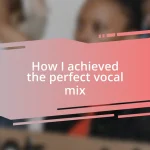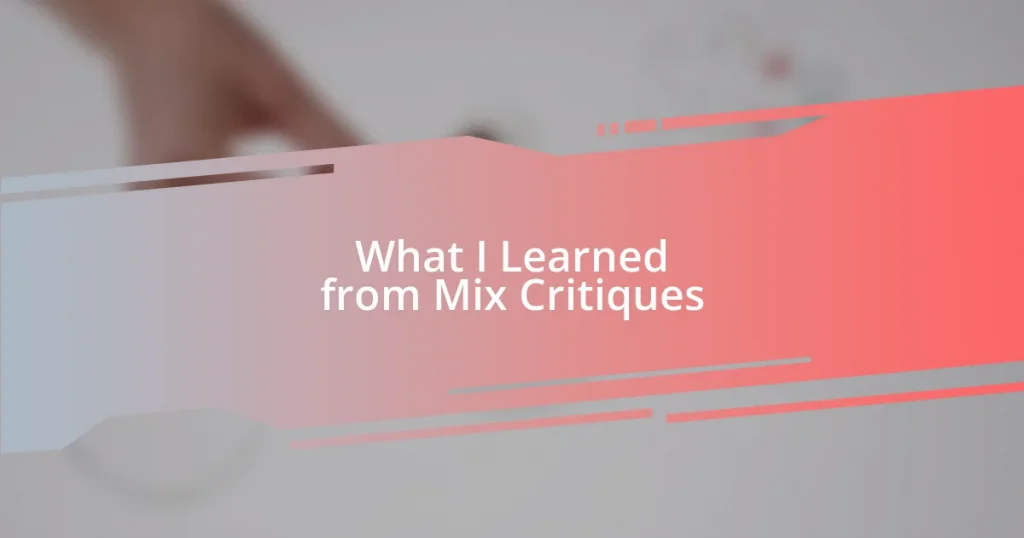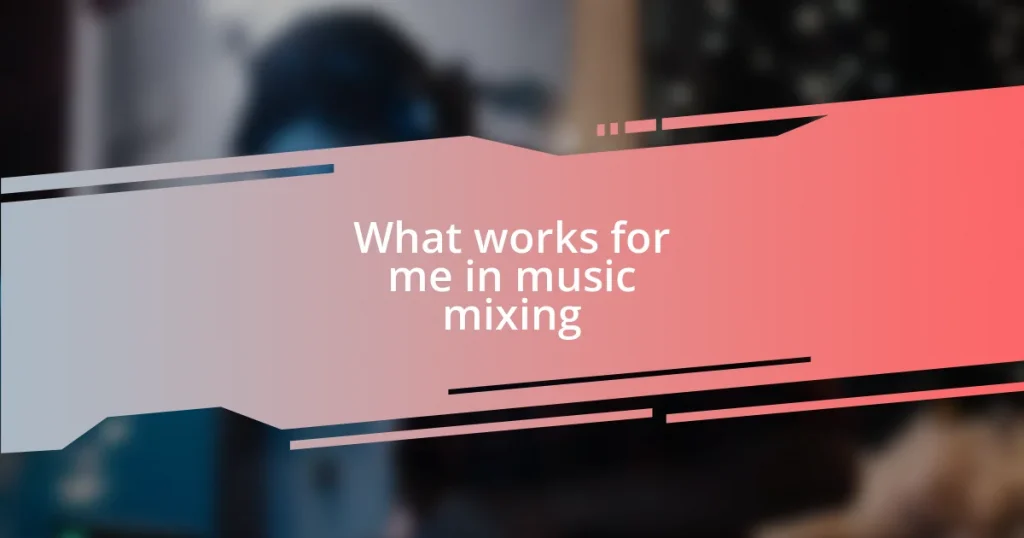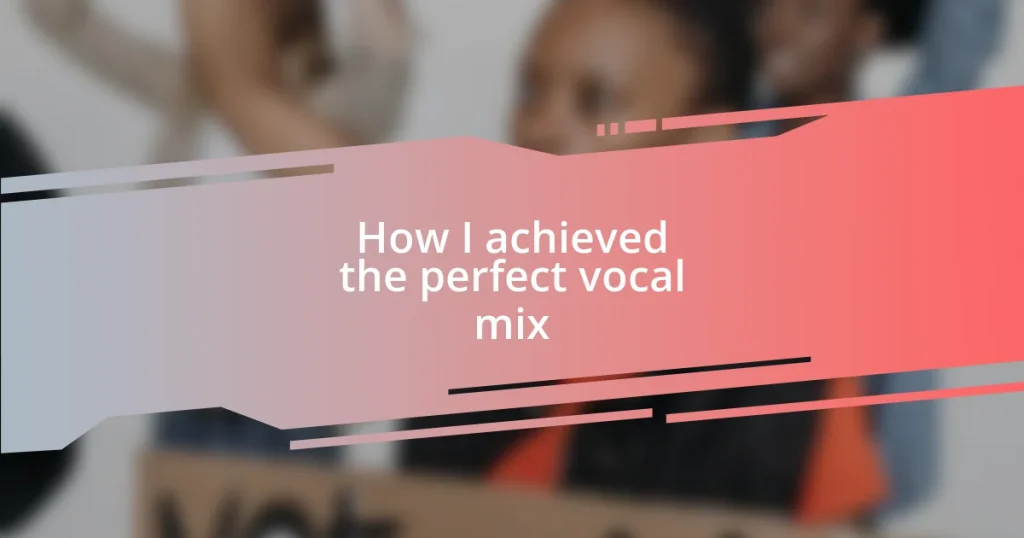Key takeaways:
- Understand the importance of adapting mixes for different listening environments, ensuring emotional connections through subtle details.
- Avoid common mixing mistakes like ignoring balance, frequency clashes, and over-compression, focusing on dynamics and spatial depth.
- Build a supportive critique network to exchange honest feedback and foster growth, while measuring improvement through comparison and audience feedback.

Key Takeaways from Mix Feedback
One of the most enlightening aspects of mix feedback is understanding different listening environments. I remember the first time I played my track in a club setting after some constructive critiques. The experience was eye-opening; what sounded great on my studio headphones suddenly lost energy in the room. This taught me the importance of adapting mixes for various platforms, a lesson I now prioritize in every project.
Another key takeaway is the emotional connection a mix can create. During a recent session, a fellow musician pointed out that my track lacked “heart.” At first, I was taken aback, but it prompted me to dig deeper into the layers of my mix. I learned that adding subtle textures or vocal nuances can significantly enhance the listener’s experience. Have you ever felt a chill during a song? That’s often the result of those minute details that resonate emotionally.
Finally, mix feedback offers an invaluable opportunity for growth. It might sting initially when someone critiques your work, but I tend to see it as a roadmap for improvement. Each piece of feedback becomes a stepping stone, guiding me to experiment with new techniques and elevate my mixing skills. Embracing this process not only refines my work but fosters resilience and creative exploration within me.
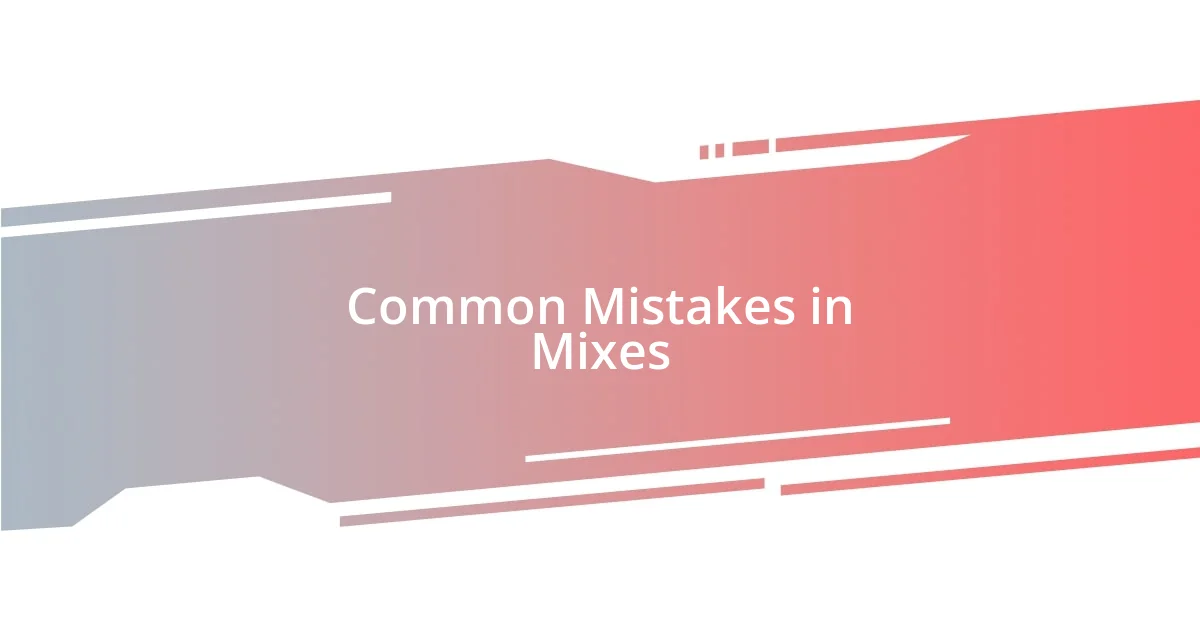
Common Mistakes in Mixes
When it comes to common mistakes in mixes, I’ve noticed that many people tend to overlook the balance between elements. In my early days, I was so excited about adding layers that I’d drown out the vocals, which left the track feeling chaotic instead of cohesive. Each element has its own role, and it’s crucial to ensure they complement rather than compete with each other.
Here are a few specific pitfalls to avoid:
- Ignoring frequency clashes between instruments, which can muddy the overall sound.
- Over-compressing tracks, resulting in a loss of dynamics and emotional impact.
- Neglecting panning, leading to a flat mix that lacks spatial depth.
- Failing to reference tracks in similar genres, which can guide you toward industry standards for mixing.
- Missing the significance of silence and negative space; sometimes, less truly is more.
Recognizing these mistakes has made a profound difference in my approach. Once, a producer pointed out that a key part of my mix didn’t breathe properly, and I realized my mix was almost so polished that it felt lifeless. Adjusting the dynamics allowed the music to unfold more naturally, and it turned out to be a game changer. It’s little adjustments like these that truly elevate a mix from good to memorable.
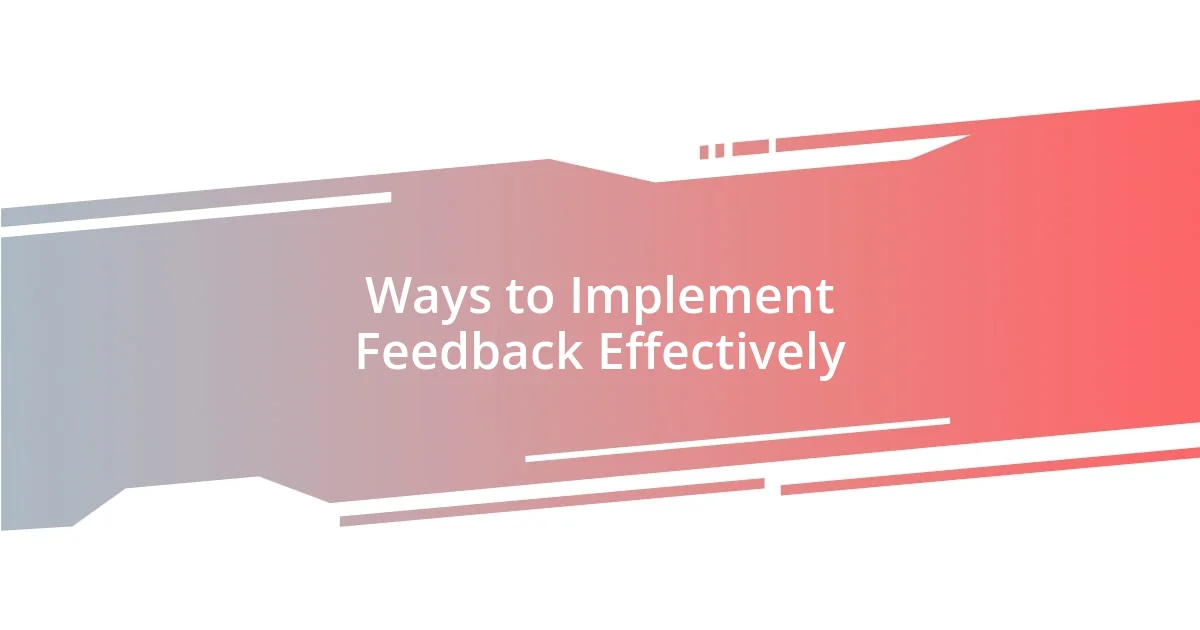
Ways to Implement Feedback Effectively
When implementing feedback effectively, I find it crucial to create a systematic approach. One method that works wonders for me is keeping a dedicated feedback journal. I jot down critiques from peers and try to categorize them based on frequency or impact. This organization not only clarifies my next steps but helps me see patterns over time. Have you ever revisited feedback weeks later and found that it resonates differently? That’s the beauty of documenting my journey.
Another helpful way I’ve learned to process feedback is to invite a diverse group of listeners. I once gathered friends from different musical backgrounds to listen to a mix I had been working on. The variety of perspectives they offered led to revelations I hadn’t considered. Some highlighted aspects of my track that needed more grit, while others celebrated the melodic elements. This diversity can reveal blind spots in your work that might go unnoticed in a homogeneous group.
Additionally, I’ve discovered that timing is essential when revisiting critiques. Instead of diving into changes right away, I often take a moment to reflect on the feedback after some time has passed. This space allows me to detach emotionally and evaluate suggestions more objectively. I remember a mix where I felt overwhelmed by feedback; after stepping away for a bit, I returned with fresh eyes and was able to implement changes that genuinely enhanced the track without losing my artistic vision.
| Implementation Strategy | Description |
|---|---|
| Feedback Journal | Document critiques and categorize feedback for clarity and pattern recognition. |
| Diverse Listeners | Gather listeners from different musical backgrounds for varied perspectives. |
| Time for Reflection | Take time to reflect on feedback before implementing for an objective approach. |
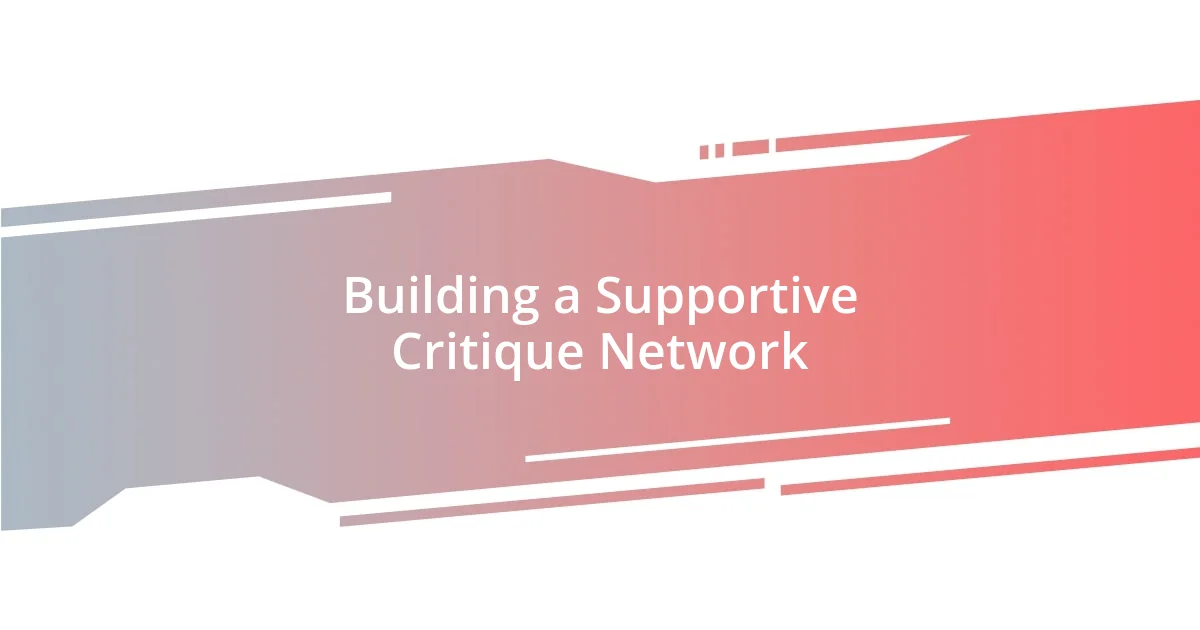
Building a Supportive Critique Network
Building a supportive critique network has been one of the most rewarding experiences in my musical journey. I remember the first time I actively sought out peers for feedback; I organized a small gathering with fellow musicians, each bringing a unique style. Sharing our work in that supportive environment felt like opening a window to fresh perspectives. Have you ever felt that rush of excitement when everyone starts to blend their insights? It’s like pieces of a puzzle coming together, creating a clearer image of our collective growth.
One of the key aspects I’ve learned is the importance of establishing trust within your critique network. This trust allows for honest, constructive feedback without fear of judgment. I’ve had experiences where we would exchange tracks, and during the feedback sessions, it became evident that vulnerability opened doors to deeper discussions. The first time one of my friends shared a personal story about his creative blocks while giving me feedback, it hit home. If we can be open about our challenges, we often find common ground and build stronger connections that enhance our collaborations.
Another critical component is the necessity to actively nurture these relationships. I frequently make it a point to check in on my critique partners, not just to seek feedback but to offer my support as well. I recall a time when a fellow mixer was struggling with confidence after receiving critical feedback. By sharing my own mishaps and earlier setbacks, I not only reinforced our bond but also reminded him that growth comes from learning, not perfection. It’s a two-way street that enriches our artistic paths, don’t you think?
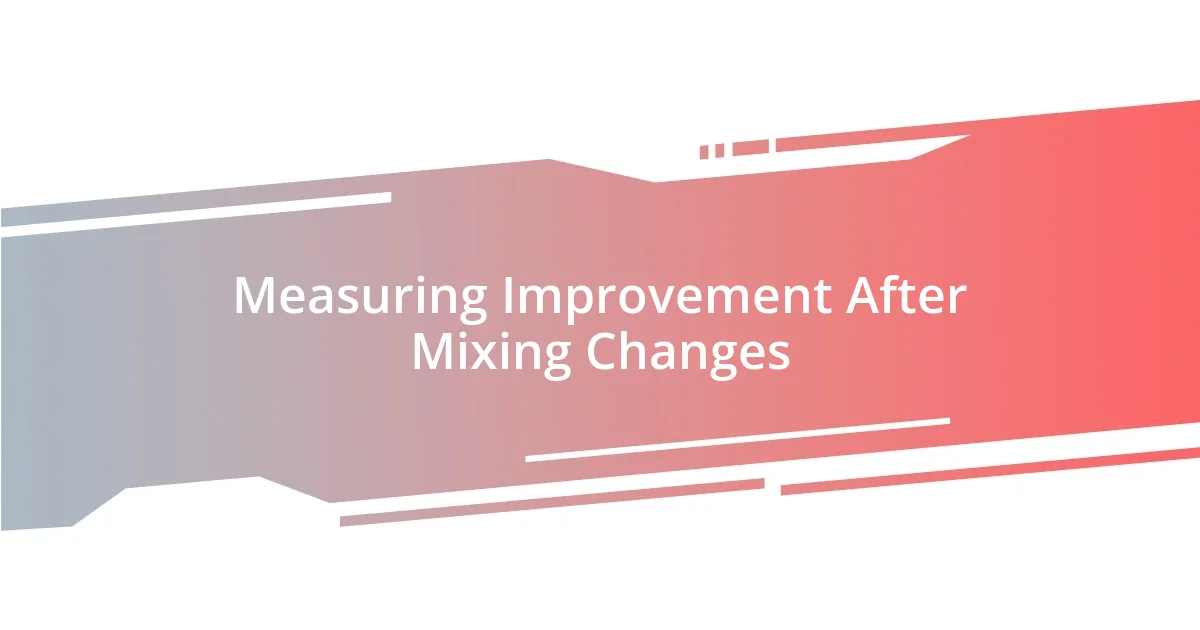
Measuring Improvement After Mixing Changes
Measuring improvement after making mixing changes can be an eye-opening experience. I remember one specific instance when I decided to compare two versions of a track: the original mix and the revised version, which incorporated feedback from my trusted critique network. Playing them back-to-back not only highlighted the specific enhancements but also made me acutely aware of the progress I had made as a mixer. Have you ever felt that thrill when you can physically hear your growth in your work? It’s incredibly motivating and affirming.
Another effective measure is utilizing software tools that provide visual feedback, such as spectrograms or peak meters, to analyze your mixes. I’ve found it fascinating to see how the dynamic range changes with each iteration I’ve made. Once, while analyzing a mix, I noticed the first version had a lot of frequency build-up that muddied the sound. By adjusting the EQ, I not only cleared up the mix but could visually see the difference. This tangible data helps me appreciate not just the sounds I’m hearing, but also the technical improvements I’ve implemented.
Lastly, sharing my mixes on platforms like SoundCloud and inviting public feedback has been crucial for measuring my progress. One time, I posted a before-and-after of a mix, and the reactions were eye-opening. The feedback illuminated aspects I hadn’t considered—some listeners appreciated the deeper bass, while others favored a more airy vocal presence. This process taught me that measuring improvement isn’t only about personal satisfaction; it’s also about understanding how my audience evolves alongside my choices. So, how do you measure your own improvement in mixing? What tools or methods resonate with you?

